![]() 3 Apr 2024
3 Apr 2024
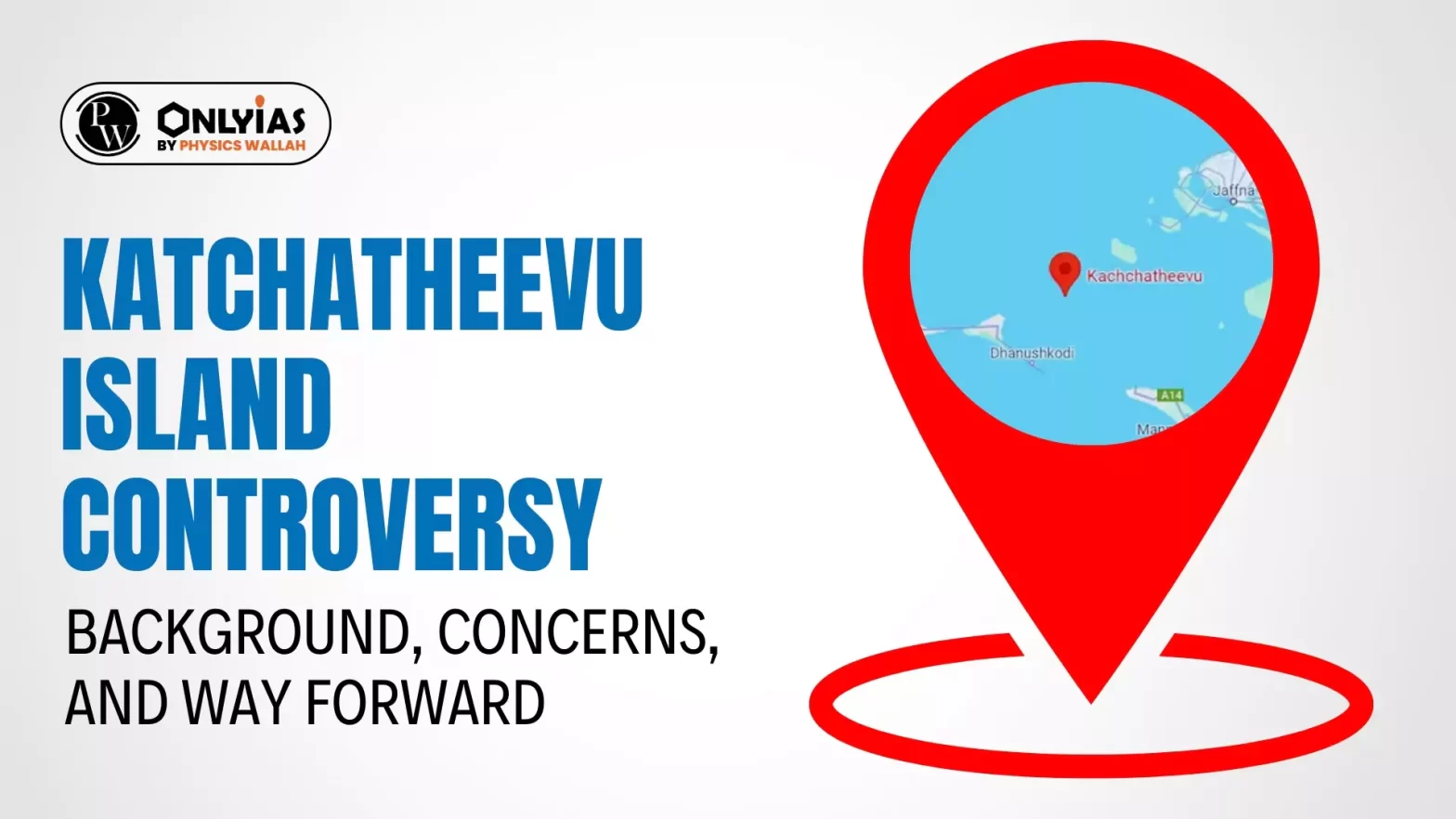
Recently, the Indian Prime Minister’s post on social media of ‘callously‘ giving away the disputed territory of Katchatheevu Island to Sri Lanka in 1974 has resurfaced the issue again.
| Relevance for Prelims: Katchatheevu Island, Katchatheevu Island Issue, India-Sri Lanka Relations, and India Sri Lanka Economic Ties.
Relevance for Mains: Katchatheevu Island Controversy: Background, Concerns, and Way Forward. |
|---|
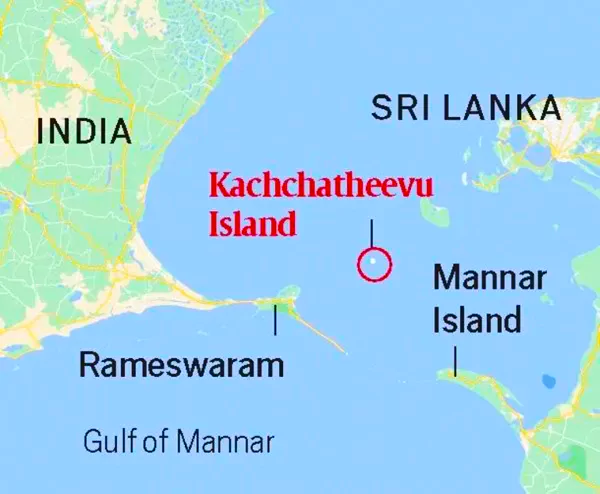
Katchatheevu Island Map
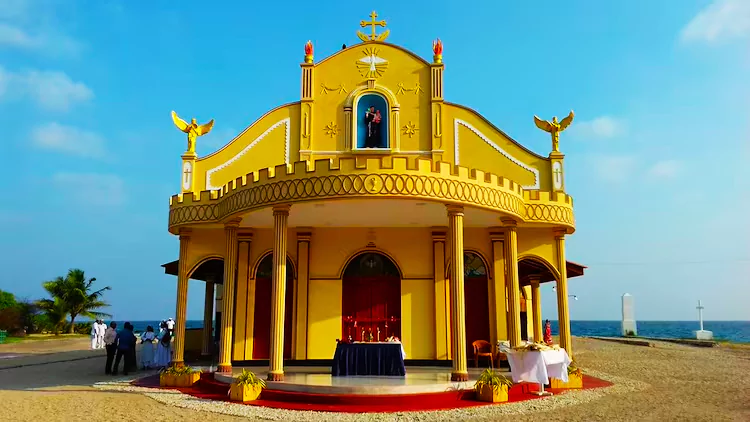 Features of Katchatheevu Island
Features of Katchatheevu Island
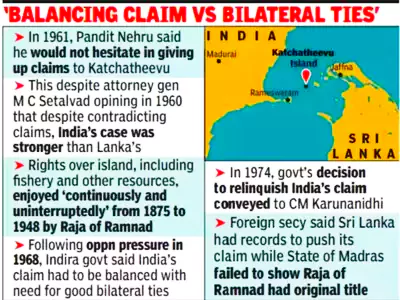 Reason: It is due to complex factors like excessive trawling in the Sethusamudram region, contested legacies of the Lankan civil war, and the bilateral irresolution of the Tamil question.
Reason: It is due to complex factors like excessive trawling in the Sethusamudram region, contested legacies of the Lankan civil war, and the bilateral irresolution of the Tamil question.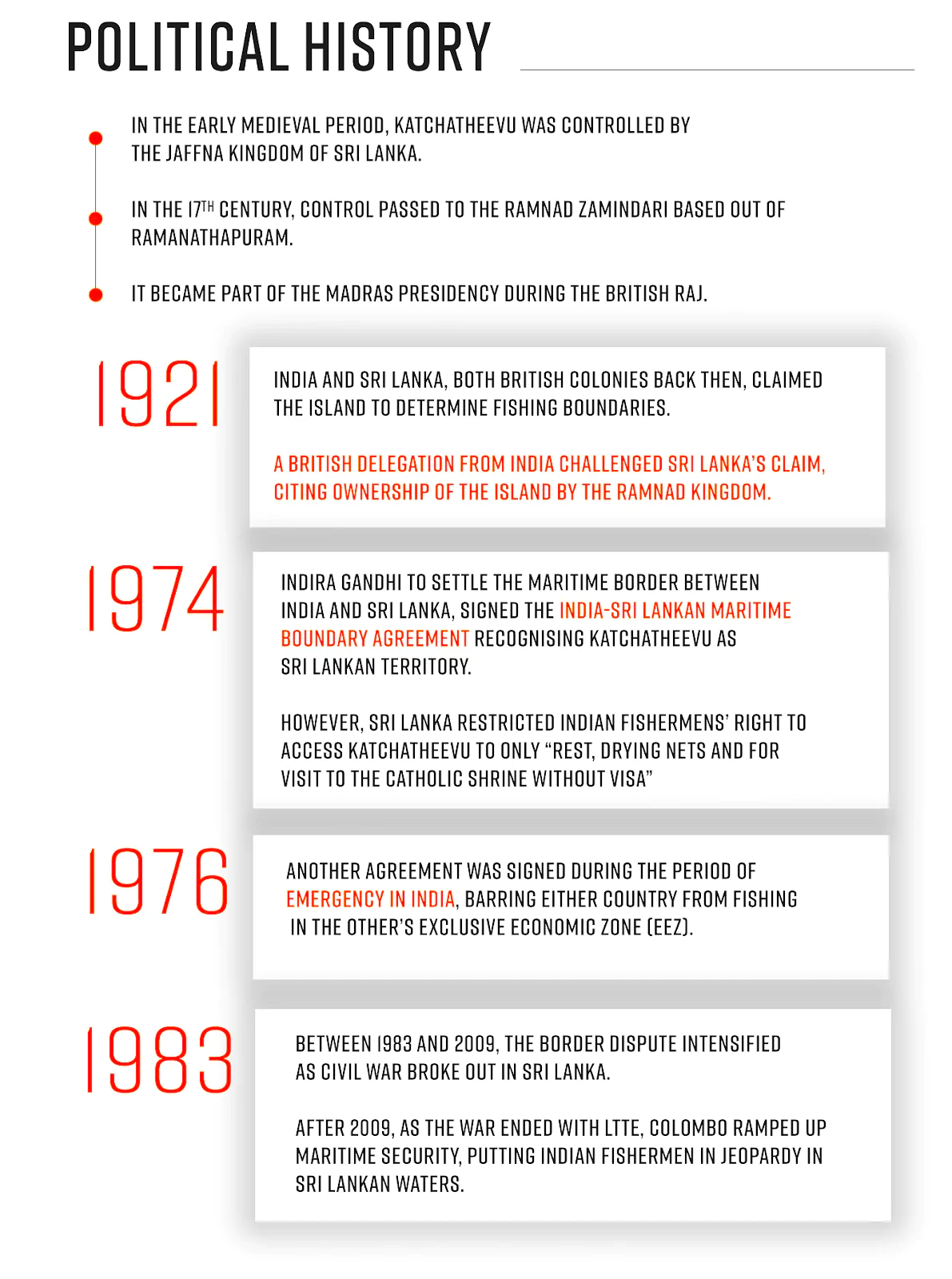 It became part of the Madras Presidency during the British Raj.
It became part of the Madras Presidency during the British Raj. |
Key Provisions of the Indo-Sri Lankan Maritime Agreement, 1974 |
|
| Article 4 |
|
| Article 5 |
|
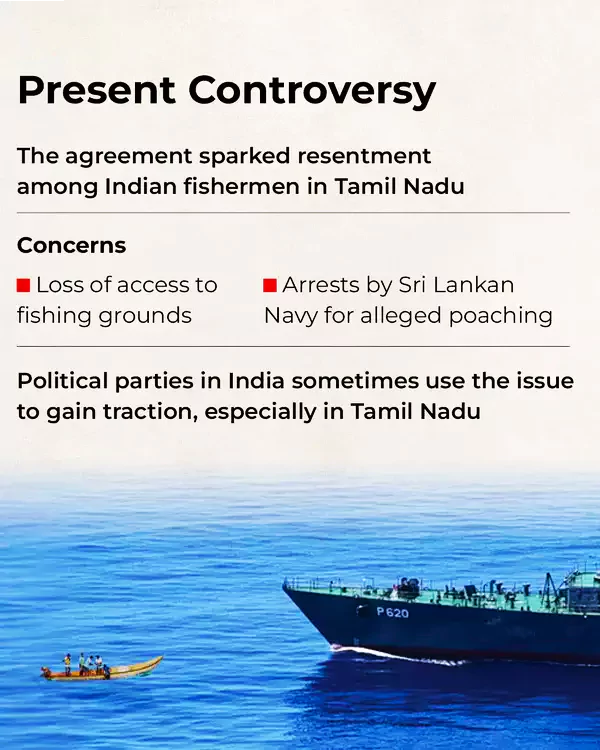
| Must Read | |
| NCERT Notes For UPSC | UPSC Daily Current Affairs |
| UPSC Blogs | UPSC Daily Editorials |
| Daily Current Affairs Quiz | Daily Main Answer Writing |
| UPSC Mains Previous Year Papers | UPSC Test Series 2024 |
<div class="new-fform">
</div>